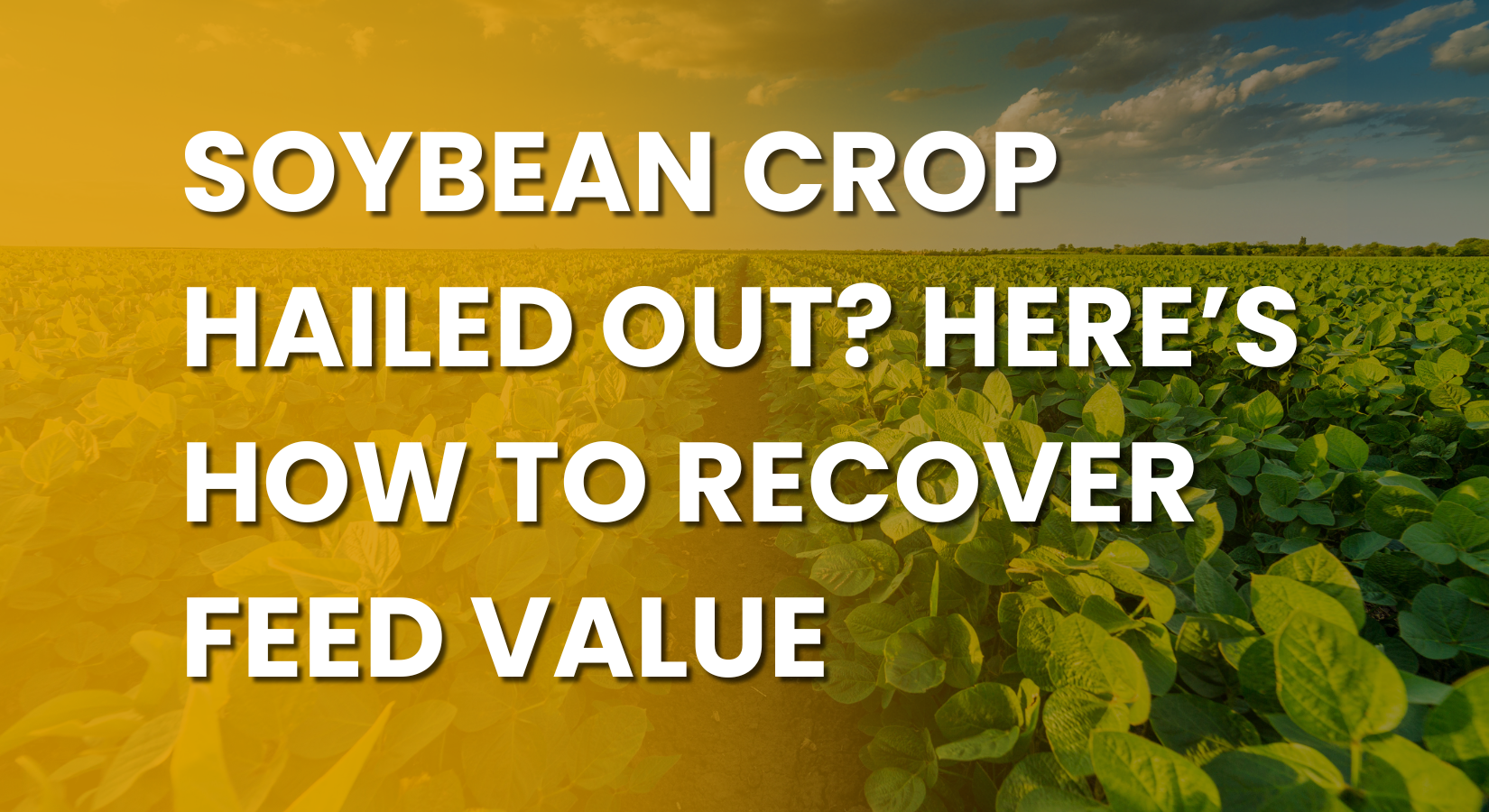Hail damage can wreak havoc on soybean fields, leaving growers wondering what’s next. Whether your soybeans were hit early or late in the growing season, there are strategic options to help you recover value and even turn a setback into an opportunity.
Let’s explore what to do when hail takes a bite out of your crop and how to make the most of a less-than-ideal situation.
Timing Matters: Early vs. Late Season Hail Damage
Early-Season Hail
If hail hits your soybeans early in the growing season, there’s a good chance the plants will recover naturally. Soybeans are surprisingly resilient when young, and many plants will regrow with minimal long-term yield loss. In this case, monitor progress, but you may not need to take drastic action.
Mid-to-Late Season Hail
When hail strikes in the middle or later stages of growth, soybean recovery becomes less likely, and your options shift toward salvaging the field. If you're in need of a forage crop, this is where things get creative—and potentially profitable.
Turning Hailed Soybeans into a Forage Opportunity
One option is to leave the damaged soybeans in place and interseed a new forage crop directly into the field. This method transforms the failed soybean stand into a companion crop system, producing a blend that can be harvested together as a mixed forage bale.
Some recommended forage crops for interseeding include:
-
Oats or rye (cool-season grasses)
-
Sorghum-sudangrass or pearl millet
-
Annual clovers or brassicas for protein boosts
This strategy gives you usable feed, prevents field abandonment, and helps reclaim lost income from the original soybean planting.
Gear Up with the Right Equipment
To make the most of your fallback forage crop, you'll need reliable hay equipment and wrapping supplies. At Agzaga.com, you’ll find everything you need to pivot quickly:
Whether you’re baling traditional forage or a mixed hail-damaged field, Agzaga has your back with fast shipping and unbeatable prices.
Final Thoughts
Hail-damaged soybeans don’t have to mean a total loss. By evaluating the timing, considering interseeding options, and thinking ahead to forage value, you can turn a tough year into a salvageable one.
For more expert tips on forage management and recovery strategies, visit forageguy.com.
